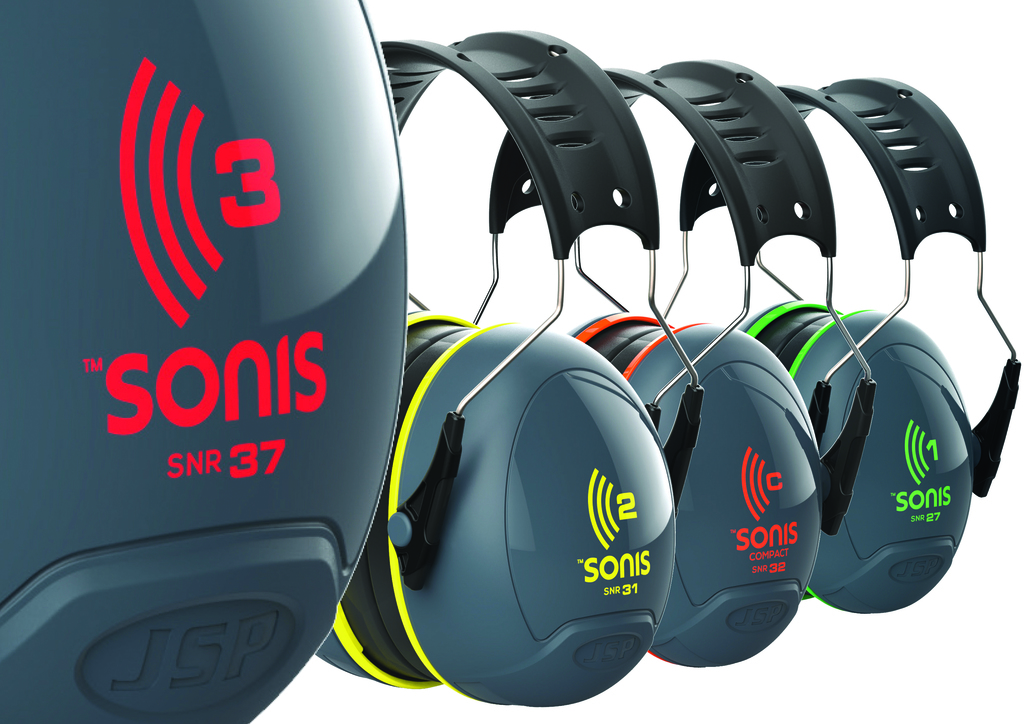

|
Edward Lowton
Editor |


|
| Home> | Health, Safety & Welfare | >PPE | >Compatibility matters |
Compatibility matters
09 June 2017
When PPE is required to be worn for a particular work environment or task, several items are usually involved. A common combination is head and hearing protection, so most safety helmets have a facility, usually an accessory slot at each side, to allow them to be fitted with hearing protection. To work properly, the different types of PPE must be compatible.

To this end, many manufacturers offer helmet-mounted ear defenders specifically for the purpose, so, if you select a helmet and ear defender from the same manufacturer, they are likely to have been approved for use together. For example, JSP's latest range of helmet-mounted ear defenders, Sonis, is compatible and works with the company’s Evo range of industrial head protection.
If, however, you select a helmet from one manufacturer and helmet-mounted ear defenders from another, they may well fit together, but unless they have been performance-tested together JSP says there is no guarantee they will provide the required protection.
The main problem is that the fitting points of the helmet and ear defender are often of a ‘standard’ size and style. Ear defenders work through a combination of the seal that the cup makes around the ear and the clamping force produced by the spring arm attached to that cup. When attached to a helmet, the latter forms part of the headband, essentially providing the required clamping force to the wearer’s head. You may have selected the most suitable helmet for you or your workforce, and also the most appropriate ear defender for the noise hazard, also taking into account weight, comfort, user acceptance, etc. but unless they have been approved for use in combination you cannot assume that the ear defender will provide the correct hearing protection. The particular size and design of the helmet shell, as well as the materials used in it, may (will) affect the performance of the ear defender.
Both the helmet and the ear defenders should be CE-marked – a legal requirement for any item of personal protective equipment (PPE) offered for sale within the EU. This mark can be applied if the PPE can been shown to comply with all applicable basic health and safety requirements (BHSRs) of the PPE Directive 89/686/EEC. One of those BHSRs covers compatibility of different types of PPE when worn together, so that the fit and/or function of one type is not affected by using or wearing the other. This only refers to different types made by the same manufacturer, however.
The CE mark shows that a product is safe and suitable to use, but it does not tell you anything about its performance for any given application or task. Manufacturers can choose to have products tested for performance to a harmonised EN standard, certification to which also demonstrates compliance with the BHSRs of the Directive, so they can be CE-marked. Certification to an EN standard is therefore the most common route to obtaining the CE mark for an item of PPE.
The EN 352 suite of standards covering hearing protection comprises eight parts. EN 352-1 stipulates performance requirements for ear defenders on a headband or neckband, which is how they would be worn when used alone. EN 352-3, however, relates specifically to helmet-mounted ear defenders and the requirements are different, acknowledging the fact that a spring arm attached to a helmet performs differently to a headband.
Distributors will generally offer a range of product types. If you select products from different sources, rather than from the same manufacturer, make sure you check that the ear defenders have been tested on the specific make and model of helmet with which you plan to use them, and that they have been certified for use together. Achieving a good fit is fine, but ensuring protection is paramount.

















